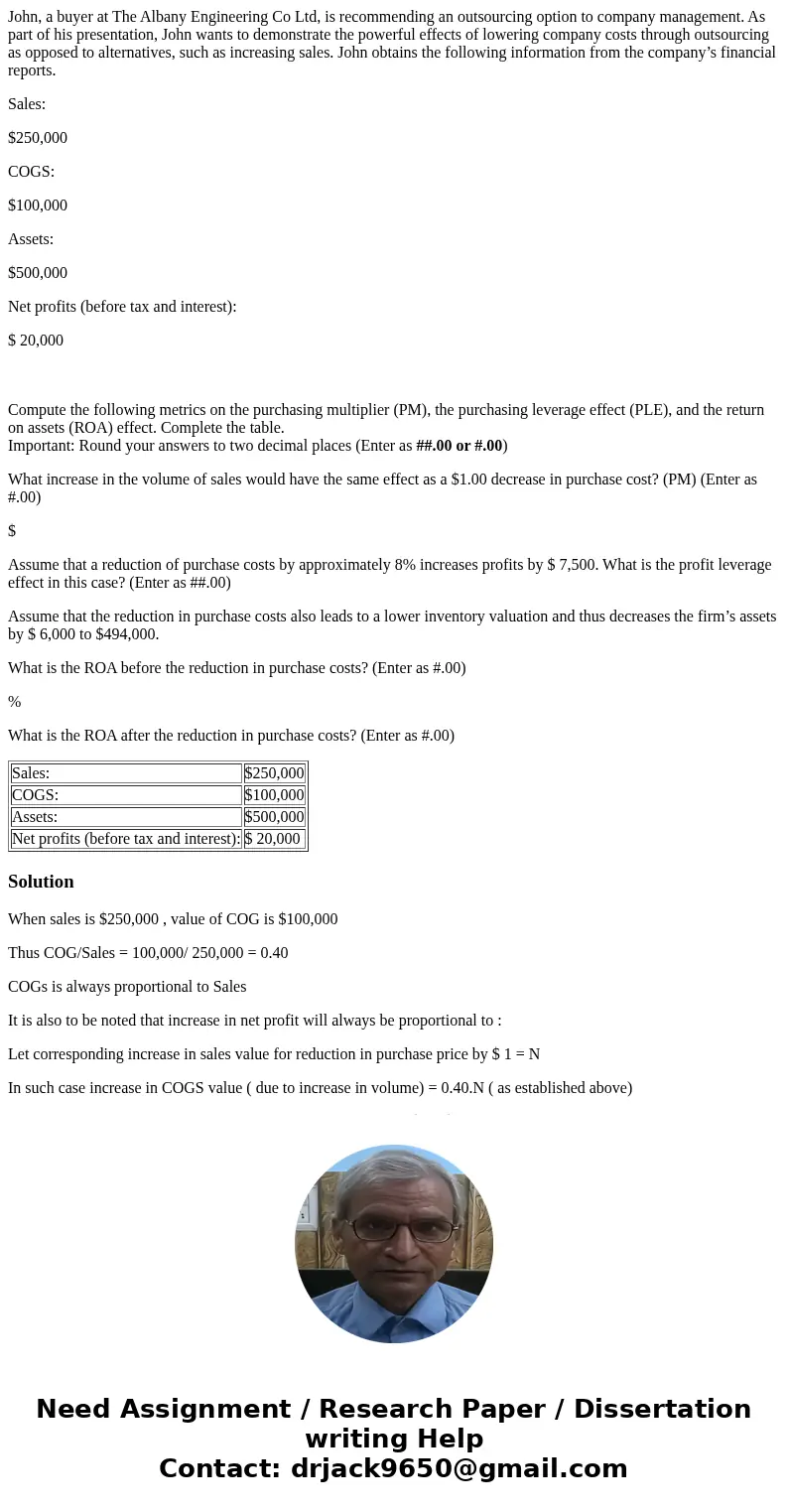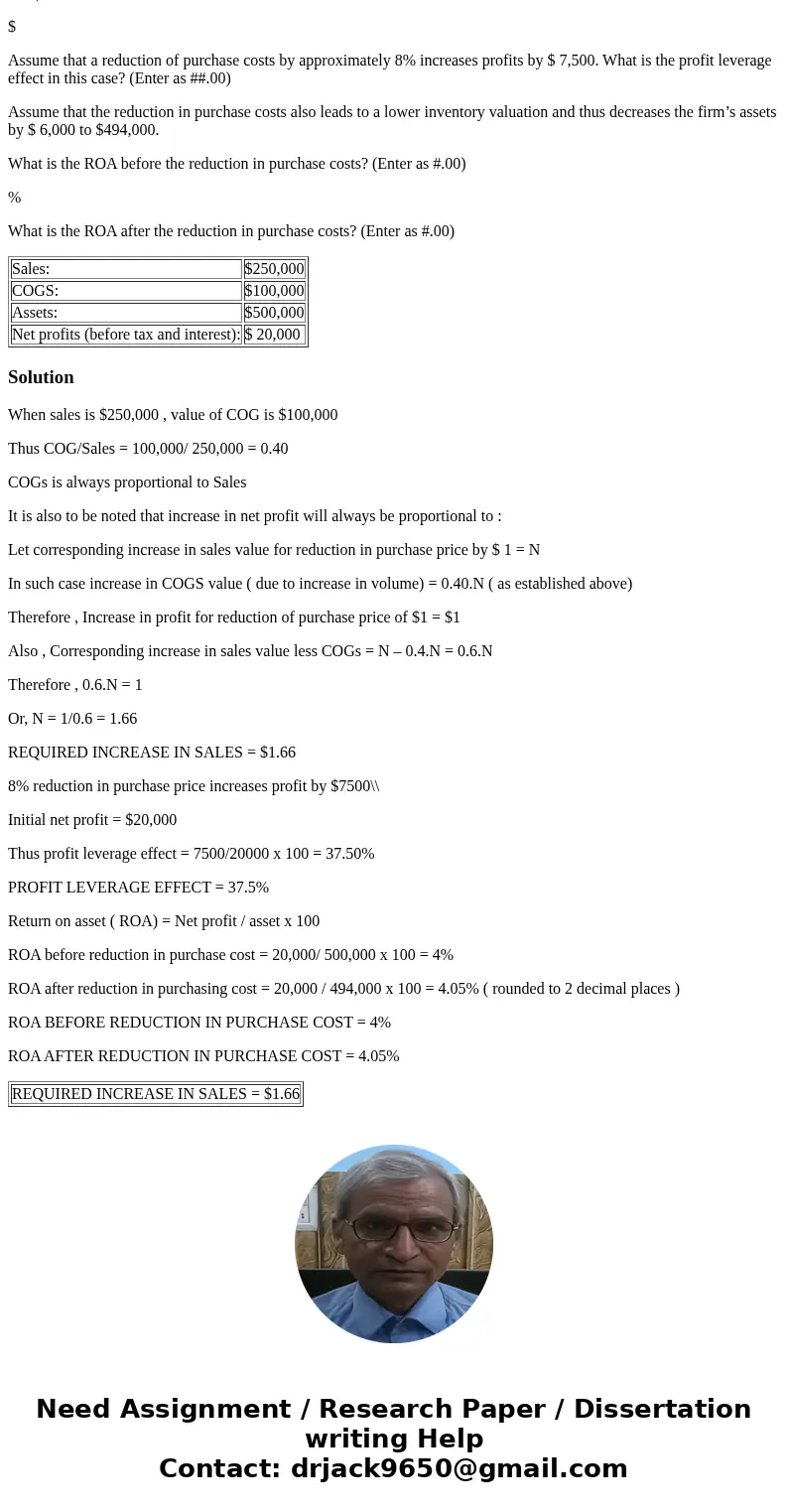John a buyer at The Albany Engineering Co Ltd is recommendin
John, a buyer at The Albany Engineering Co Ltd, is recommending an outsourcing option to company management. As part of his presentation, John wants to demonstrate the powerful effects of lowering company costs through outsourcing as opposed to alternatives, such as increasing sales. John obtains the following information from the company’s financial reports.
Sales:
$250,000
COGS:
$100,000
Assets:
$500,000
Net profits (before tax and interest):
$ 20,000
Compute the following metrics on the purchasing multiplier (PM), the purchasing leverage effect (PLE), and the return on assets (ROA) effect. Complete the table.
Important: Round your answers to two decimal places (Enter as ##.00 or #.00)
What increase in the volume of sales would have the same effect as a $1.00 decrease in purchase cost? (PM) (Enter as #.00)
$
Assume that a reduction of purchase costs by approximately 8% increases profits by $ 7,500. What is the profit leverage effect in this case? (Enter as ##.00)
Assume that the reduction in purchase costs also leads to a lower inventory valuation and thus decreases the firm’s assets by $ 6,000 to $494,000.
What is the ROA before the reduction in purchase costs? (Enter as #.00)
%
What is the ROA after the reduction in purchase costs? (Enter as #.00)
| Sales: | $250,000 |
| COGS: | $100,000 |
| Assets: | $500,000 |
| Net profits (before tax and interest): | $ 20,000 |
Solution
When sales is $250,000 , value of COG is $100,000
Thus COG/Sales = 100,000/ 250,000 = 0.40
COGs is always proportional to Sales
It is also to be noted that increase in net profit will always be proportional to :
Let corresponding increase in sales value for reduction in purchase price by $ 1 = N
In such case increase in COGS value ( due to increase in volume) = 0.40.N ( as established above)
Therefore , Increase in profit for reduction of purchase price of $1 = $1
Also , Corresponding increase in sales value less COGs = N – 0.4.N = 0.6.N
Therefore , 0.6.N = 1
Or, N = 1/0.6 = 1.66
REQUIRED INCREASE IN SALES = $1.66
8% reduction in purchase price increases profit by $7500\\
Initial net profit = $20,000
Thus profit leverage effect = 7500/20000 x 100 = 37.50%
PROFIT LEVERAGE EFFECT = 37.5%
Return on asset ( ROA) = Net profit / asset x 100
ROA before reduction in purchase cost = 20,000/ 500,000 x 100 = 4%
ROA after reduction in purchasing cost = 20,000 / 494,000 x 100 = 4.05% ( rounded to 2 decimal places )
ROA BEFORE REDUCTION IN PURCHASE COST = 4%
ROA AFTER REDUCTION IN PURCHASE COST = 4.05%
| REQUIRED INCREASE IN SALES = $1.66 |


 Homework Sourse
Homework Sourse